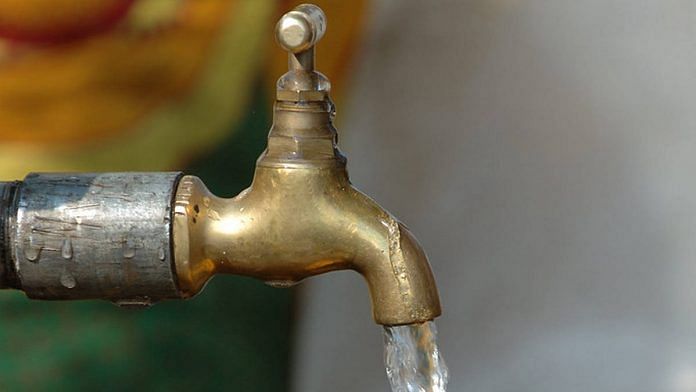New Delhi: A spike in the ammonia levels in the raw water discharged from Haryana hit water supply in parts of Delhi on Monday, Delhi Jal Board (DJB) Vice Chairman Raghav Chadha said.
“Due to increase in pollutants (ammonia levels) in raw water discharged from Haryana, the water supply will be affected in parts of West Delhi, North Delhi, Central Delhi and South Delhi. We endeavor to restore normal water supply ASAP. Please use water judiciously,” Chadha wrote on Twitter.
On Friday, too, the DJB had curtailed supply at the Wazirabad, Chandrawal and Okhla water treatment plants due to high levels of pollutants in the Yamuna river.
A DJB official said Haryana had opened the gates of drains that had stagnant water with a high pollutant concentration, following heavy rainfall.
Effluents from industrial units upstream of the Wazirabad barrage might also have increased the pollutant levels in the river, the official said.
Meanwhile, the NGT-appointed Yamuna Monitoring Committee (YMC) has also sought a report from the Central Pollution Control Board (CPCB), Delhi Pollution Control Committee (DPCC) and industries commissioner on the reasons behind a “sudden froth” in the river.
The two-member committee, comprising retired National Green Tribunal expert-member B S Sajawan and former Delhi chief secretary Shailaja Chandra, has asked the CPCB, DPCC Chairman Sanjeev Khirwar and Industries Commissioner Vikas Anand to take prompt action to detect the source of the froth in the river and act against those responsible.
The panel has asked the anti-pollution bodies to keep it informed of the matter.
In November last year, the YMC had asked the CPCB, DPCC and industries commissioner to take necessary action to close down the industries causing such environmental hazards.
The directions had come after “shocking pictures of froth in the river got extensive media coverage” and “very damaging comments” on the toxicity in the river during the Chhath festival.
The CPCB, in its report, had said a high phosphate concentration, mostly from household waste water, was the major reason behind frothing in the Yamuna.
Also read: World Environment Day: Flowercycling to sewage treatment, these startups are saving Earth



